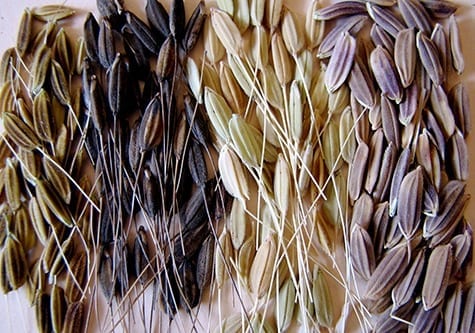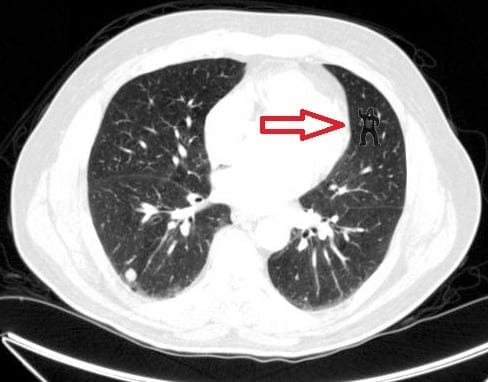
Weeds derived from a crop plant pose special challenges for modern farming
The evolutionary biologist Stephen Jay Gould once asked whether the living world would be different “if the tape were played twice.” If there were a duplicate Earth evolving quietly beside ours, would we observe the emergence of creatures like ourselves and of plants and animals familiar to us, or would the cast of characters be entirely different?
It’s an intriguing question.
So far replicate Earths are in short supply, but cases of parallel evolution (the same trait evolving independently in related lineages) allow scientists to ask some of the same questions.
One beautiful case of parallel evolution is the double domestication of rice in Africa as well as Asia, which was followed by its double “de-domestication,” or reversion to a wild form, all within the roughly 10,000 years since hunter-gatherers became settled farmers.
With the help of modern genetic technology and the resources of the International Rice GeneBank, which contains more than 112,000 different types of rice, evolutionary biologist Kenneth Olsen, PhD, associate professor of biology in Arts & Sciences at Washington University in St. Louis, has been able to look back in time and ask whether the same mutations underlay the emergence of the same traits in both cultivated and weedy rice.
His latest findings, which take a close look at the genetics of hull color, appear in the July 17, 2013, online issue of the Journal of Evolutionary Biology.
The answers are interesting in their own right but also have practical importance because modern agriculture is radically changing the selection pressures acting on rice, the most important food crop for most of the world’s populations.
In response to these pressures, weedy forms that evolved from the crop forms are taking on traits more like those of wild ancestors. “They’re very aggressive competitors,” Olsen says, “and they’ve become a huge problem both here in the U.S. and all over the world.”
“In some parts of the world farmers have given up trying to grow rice and just market the weedy stuff that’s infested the fields as a health food,” he says. You sometimes see red rice from the Camargue, the delta region in southern France, in stores, he says. “Red rice is full of antioxidants, which tend also to be plant defense chemicals,” Olsen says, “but it is basically a weed.”
Double domestication
Worldwide, most of the cultivated rice is Asian rice, Oryza sativa which was bred from its wild progenitor Oryza rufipogon in southern Asia within the past 10,000 years.
Whether the familiar indica and japonica subspecies of Asian rice also represent independent domestications is controversial. Most of the rice grown in the U.S. is japonica rice, Olsen says, which is genetically pretty different from indica rice, the rice grown in a lot of the tropics.
In any event there was a second unambiguous domestication event about 3,500 years ago when African cultivated rice (O. glaberrima) was bred from the African wild species O. barthii in the Niger River delta.
Scientists are now in a position to examine the genetic basis of both the Asian and African domestications, Olsen says. In a way it’s like being able to go back to check DNA fingerprints at the scene of a crime committed well before DNA testing first became available.
When a plant is domesticated, it acquires a suite of traits called the domestication syndrome that made it easier to grow as a crop. In rice, the syndrome includes loss of shattering (the seeds don’t break off the central grain stalk before harvest), increase in seed size, and loss of dormancy (the seeds all germinate at once and can be harvested at once).
Do the same genetic mutations underlie the emergence of these traits in both the Asian and African domestication events, or did domestication result from different mutations in the same genes, or even from mutations in different genes?
The Latest Bing News on:
Parallel evolution
- The Dragoon Is a Modded Triumph Bonneville Bobber You’ll Probably Love to Bitson April 27, 2024 at 12:03 pm
Although there is nothing overly complex about the mods performed here, each and every one of them is extremely well done ...
- Vietnamese solar company to create 900 jobs, invest $294 million in Pitt Countyon April 26, 2024 at 5:51 am
Boviet Solar plans to spend $294 million by the end of 2027 as part of the deal, state economic development officials said Friday. It's the latest clean-energy recruiting win for commerce officials, ...
- Troubled Times For Wine In 2023: Global Production And Consumption Shrinkingon April 25, 2024 at 11:39 am
In 2023, the world wine production declined by 10% to reach 237.3 million hectolitres. Wine consumption also decreased as did world vineyard surface.
- Bats Are Going Through a Rare Evolutionary Phenomenonon April 25, 2024 at 8:05 am
An example of parallel evolution can be seen in the development of similar body shapes and adaptations in aquatic animals like dolphins and ichthyosaurs, despite them coming from very different ...
- Researchers uncover 'parallel universe' in tomato geneticson April 24, 2024 at 11:00 am
In a paper appearing in Science Advances, Michigan State University researchers have unraveled a surprising genetic mystery centered on sugars found in what gardeners know as "tomato tar." ...
- Rare type of parallel evolution found in island batson April 24, 2024 at 5:00 am
Different sizes, similar DNA Although these two species share the same environment, they have independently developed similar traits. The smaller species, Hipposideros diadema, is widespread, ...
- Same species, different sizes: Rare evolution in action spotted in island batson April 22, 2024 at 7:03 am
A University of Melbourne researcher has spotted a rare evolutionary phenomenon happening rapidly in real time in bats living in the Solomon Islands.
- Exploring strategic automotive partnerships in the software-defined vehicle eraon April 22, 2024 at 6:00 am
The advent of software-defined vehicles and other innovative technologies is significantly reshaping the relationships between OEMs and suppliers.
- Same species, different sizes: Rare evolution in action spotted in island batson April 22, 2024 at 4:02 am
Parallel evolution is when different populations living in similar environments evolve similar features independently. “Although they are very different sizes, the bats’ DNA is very similar.
- Origins of New Genes and Pseudogeneson August 26, 2022 at 3:22 pm
the resulting genes undergo parallel evolution (Jones & Begun, 2005), in which they shift away from the functions of their parental genes. Other possible outcomes after duplication include gene ...
The Latest Google Headlines on:
Parallel evolution
[google_news title=”” keyword=”parallel evolution” num_posts=”10″ blurb_length=”0″ show_thumb=”left”]
The Latest Bing News on:
Domestication syndrome
- One Show surprises charity worker live on TVon April 27, 2024 at 3:08 am
The mum-of-five was honoured with a One Big Thank You by BBC 1's The One Show for the charity work she has done to help her community's most vulnerable people. She said it was "amazing" being ...
- Tucker Carlson: Why Does The Left Embrace Anti-White Racism? Exact Opposite Lesson Of Civil Rights Acton April 26, 2024 at 5:00 pm
Domestic terrorism from white supremacists is the most lethal ... But I think, you know, kind of white people, they're almost it's like a Stockholm syndrome, almost where they're they're like in a ...
- Crime and Public Safetyon April 26, 2024 at 1:40 pm
Seven men who went unconscious and died while Bay Area police were arresting them were injected with a tranquilizer, according to an AP report that uncovered a nationwide trend in similar ...
- Party animal or wallflower? UC San Diego lab thinks autism-gene drug could help some thriveon April 25, 2024 at 10:57 pm
Scientist says genes they’re working with could also explain why wolves evolved into dogs, and why there are no chimp cities.
- 'Wannabe gangster' with 'small man syndrome' strangled ex-girlfriend in front of her two-year-oldon April 25, 2024 at 9:46 am
Jack Brenan was mocked by the judge at his sentencing at Swansea Crown Court today after being called an "arrogant young man" and an "adolescent bully" for throttling his former partner ...
- 'Wannabe gangster' with 'small man syndrome' flew into jealous rage and strangled ex-girlfriend in front of her two-year-oldon April 25, 2024 at 5:43 am
A wannabe "gangster" flew into a jealous rage and strangled his ex-girlfriend in front of her two-year-old daughter. Jack Brenan, also known as Jack Brennan, was supported in court by his new ...
- Bishop stabbed during Sydney church service backs X's legal case to share video of the attackon April 24, 2024 at 6:03 pm
Five teenagers accused of following a violent extremist ideology have been charged with a range of offenses in an investigation that began with the stabbing of a bishop in a Sydney church, police said ...
- Governor vetoes ‘Survivors Act’ for domestic violence victimson April 24, 2024 at 5:07 am
The Oklahoma Survivors’ Act would allow for more lenient sentencing for domestic violence victims, convicted of crimes against their perpetrators. According to the author, the law allows domestic ...
- ‘Eldest Daughter Syndrome’ May Be the Reason Why You’re Such a People-Pleasing Adulton April 23, 2024 at 11:00 am
There may even be an upside to this syndrome, including qualities like self-reliance, confidence, and independence. Eldest daughters tend to have strong communication skills from having to solve ...
- Lauren Boebert Addresses Sickness Rumor After Hospitalizationon April 17, 2024 at 7:20 am
The congresswoman's office announced on April 2 that she has been diagnosed with a vascular condition known as May-Thurner syndrome after she was admitted to hospital with a severe leg swelling caused ...
The Latest Google Headlines on:
Domestication syndrome
[google_news title=”” keyword=”domestication syndrome” num_posts=”10″ blurb_length=”0″ show_thumb=”left”]











